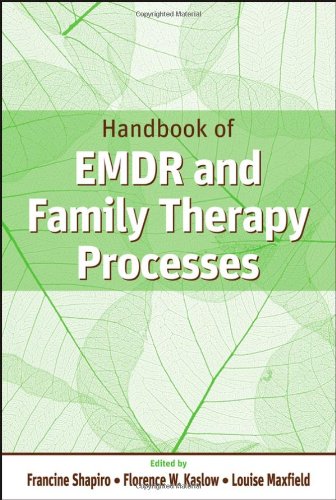There are a number of relational features that seem to enhance this amplifica- tion of therapeutic efficacy and that contribute to the “integrative” quality of in- terpersonal communication (Siegel & Hartzell, 2003). These include attunement, collaboration and compassion, and connection and cooperation. Attunement is at the heart of secure attachment and can be described as the resonance of two indi- viduals to create a mutually regulating set of reverberant states. With interper- sonal attunement, an integrated state is created within the mind/brain/body of both the interactive members. Clinicians can promote interpersonal and intrapersonal attunement. Intraper- sonal attunement is the capacity to become intimate with the inner workings of one’s own mind and is central to our innate potential for mindsight. This is the abil- ity to see our own minds compassionately with insight and to envision the minds of others with caring and empathy, and it yields the inner resources for well-being (Siegel, 2007a). EMDR may enhance mindsight by facilitating the integration of the brain that provides these mind-maps with clarity and fluidity in their construction. Promoting mindsight in family and couples therapy enables clinicians to harness the power of integration so that it is naturally reinforced in caring relationships. As the drive toward integration moves couples and families into more coher- ent states of functioning, the natural drive toward well-being is liberated. This innate drive toward health (Shapiro, 2001) is the therapist’s ally. Our task is not so much to do something to those with whom we work, but to work with them so that their own innate drive toward well-being will be released. Finding creative ways to liberate this human drive toward health and well-being is both the joy and the challenge of our profession. This excellent, thoughtful, integrative book offers a window into that creative journey that I believe you will find useful and inspiring in your own professional endeavors
چکیده فارسی
تعدادی از ویژگی های رابطه ای وجود دارد که به نظر می رسد این تقویت اثربخشی درمانی را افزایش می دهد و به کیفیت "یکپارچه" ارتباط بین فردی کمک می کند (سیگل و هارتزل، 2003). اینها شامل همسویی، همکاری و شفقت، و ارتباط و همکاری است. همسویی در قلب دلبستگی ایمن قرار دارد و می توان آن را به عنوان طنین دو فرد برای ایجاد مجموعه ای از حالت های متقابل تنظیم کننده توصیف کرد. با هماهنگی بین فردی، یک حالت یکپارچه در ذهن / مغز / بدن هر دو عضو تعاملی ایجاد می شود. پزشکان می توانند هماهنگی بین فردی و درون فردی را ترویج کنند. هماهنگی درون فردی ظرفیت صمیمی شدن با کارکردهای درونی ذهن خود است و برای پتانسیل ذاتی ما برای ذهنیت محوری است. این توانایی دیدن دلسوزانه ذهن خود با بینش و تجسم ذهن دیگران با مراقبت و همدلی است و منابع درونی برای بهزیستی را به همراه دارد (سیگل، 2007a). EMDR ممکن است با تسهیل ادغام مغز که این نقشه های ذهنی را با وضوح و سیالیت در ساخت آنها ارائه می دهد، بینش را تقویت کند. ارتقای بینش در خانواده و زوج درمانی، پزشکان را قادر می سازد تا از قدرت یکپارچگی استفاده کنند تا به طور طبیعی در روابط مراقبتی تقویت شود. همانطور که انگیزه به سمت یکپارچگی زوج ها و خانواده ها را به سمت وضعیت های منسجم تر از عملکرد سوق می دهد، انگیزه طبیعی به سمت رفاه آزاد می شود. این حرکت ذاتی به سمت سلامتی (شاپیرو، 2001) متحد درمانگر است. وظیفه ما این نیست که برای کسانی که با آنها کار می کنیم کاری انجام دهیم، بلکه این است که با آنها کار کنیم تا انگیزه ذاتی آنها به سمت رفاه آزاد شود. یافتن راههای خلاقانه برای رهایی این انگیزه انسانی به سوی سلامتی و رفاه هم لذت و هم چالش حرفه ماست. این کتاب عالی، متفکرانه و یکپارچه، دریچه ای به آن سفر خلاقانه ارائه می دهد که معتقدم در تلاش های حرفه ای خود مفید و الهام بخش خواهید بود
ادامه ...
بستن ...
There are a number of relational features that seem to enhance this amplifica- tion of therapeutic efficacy and that contribute to the “integrative” quality of in- terpersonal communication (Siegel & Hartzell, 2003). These include attunement, collaboration and compassion, and connection and cooperation. Attunement is at the heart of secure attachment and can be described as the resonance of two indi- viduals to create a mutually regulating set of reverberant states. With interper- sonal attunement, an integrated state is created within the mind/brain/body of both the interactive members. Clinicians can promote interpersonal and intrapersonal attunement. Intraper- sonal attunement is the capacity to become intimate with the inner workings of one’s own mind and is central to our innate potential for mindsight. This is the abil- ity to see our own minds compassionately with insight and to envision the minds of others with caring and empathy, and it yields the inner resources for well-being (Siegel, 2007a). EMDR may enhance mindsight by facilitating the integration of the brain that provides these mind-maps with clarity and fluidity in their construction. Promoting mindsight in family and couples therapy enables clinicians to harness the power of integration so that it is naturally reinforced in caring relationships. As the drive toward integration moves couples and families into more coher- ent states of functioning, the natural drive toward well-being is liberated. This innate drive toward health (Shapiro, 2001) is the therapist’s ally. Our task is not so much to do something to those with whom we work, but to work with them so that their own innate drive toward well-being will be released. Finding creative ways to liberate this human drive toward health and well-being is both the joy and the challenge of our profession. This excellent, thoughtful, integrative book offers a window into that creative journey that I believe you will find useful and inspiring in your own professional endeavors
ادامه ...
بستن ...










